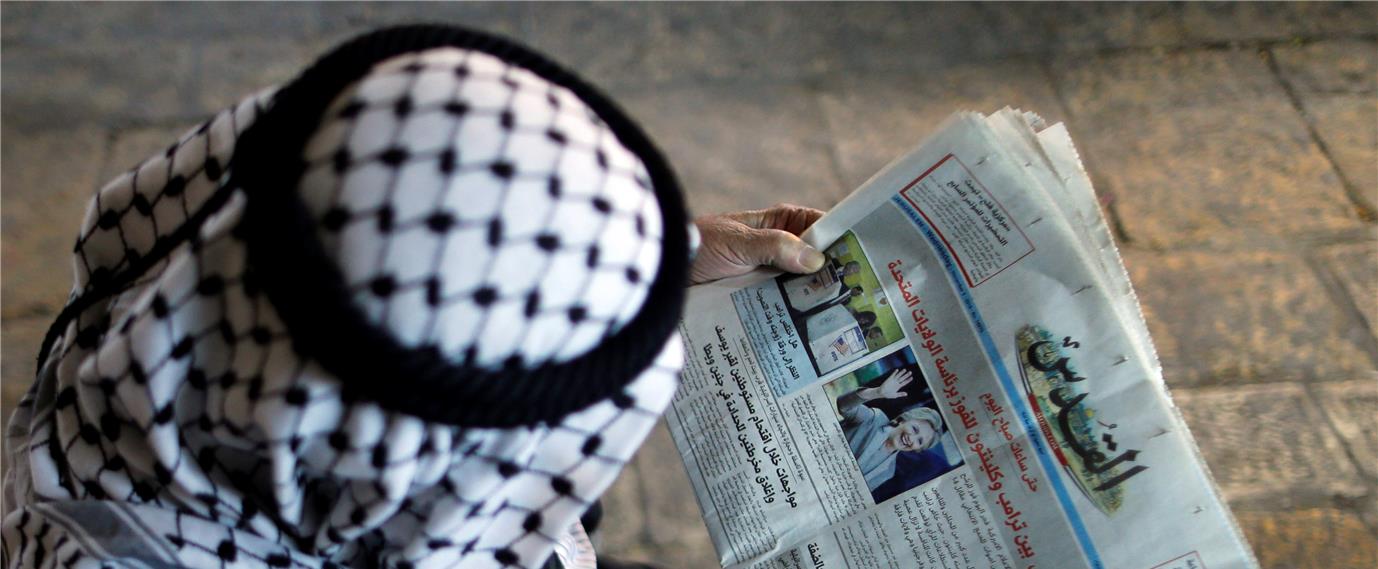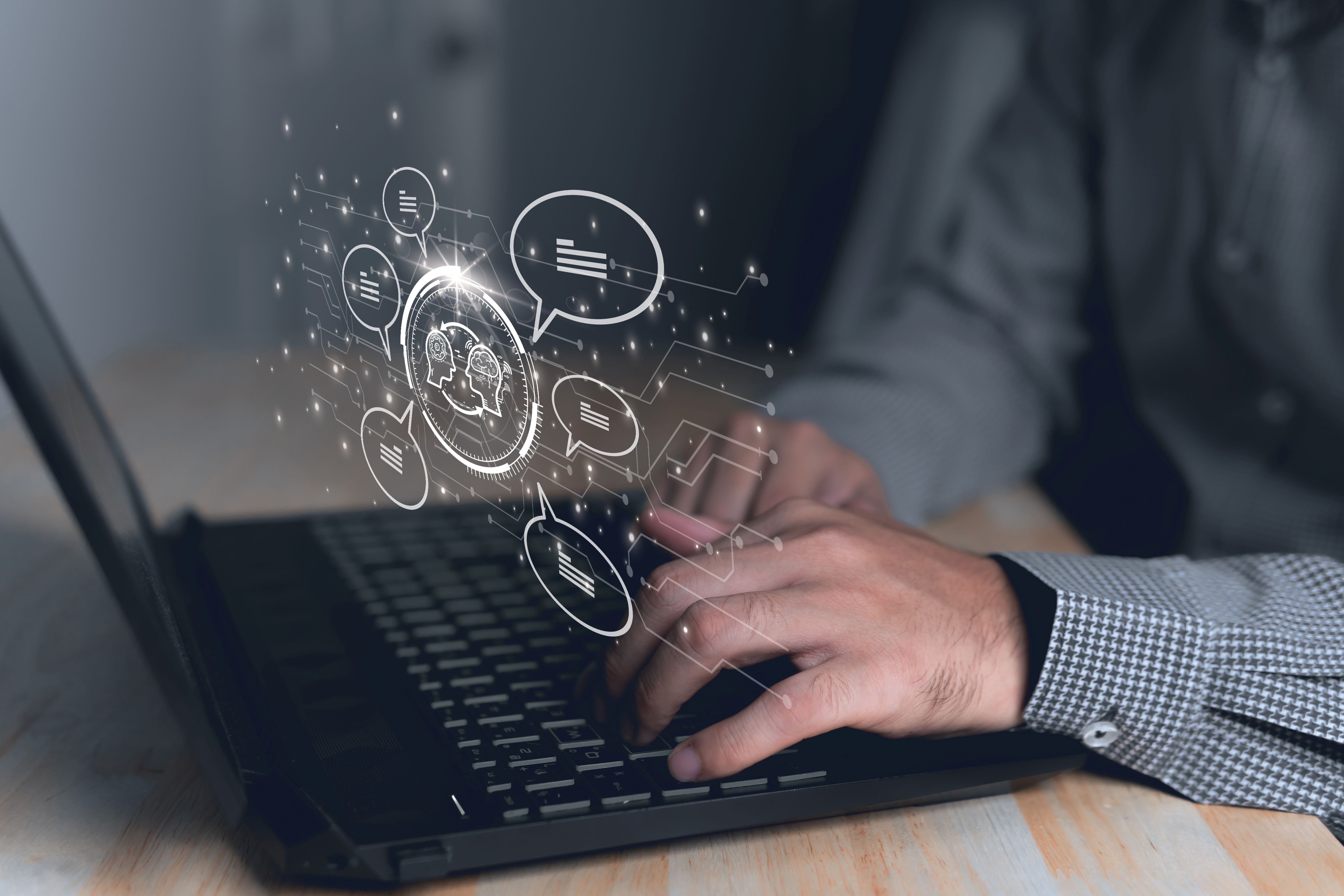تركت التطورات التكنولوجية المتلاحقة آثاراً مختلفة على المجالات البشرية كافّة، لكنّ أهم تلك المجالات المتأثرة مجال الاتصال وما يلحق به من أدوات مختلفة ذات علاقة بالصحافة والإعلام، وأكثر تلك الأدوات تأثراً هي الصحف الورقية، إذ أضحت خلال الفترة الأخيرة في موضع تحدٍ حقيقي، فإما أن تلحق بتطورات الاتصالات والإعلام الرقمي حتّى تحافظ على وجودها بين الجمهور الذي أصبح يعيش معظم أوقاته متنقلا بين التطبيقات والمواقع الاجتماعية، وإما تبقى على حالها التقليدي المعروف.
الحالة العامّة للصحف الفلسطينية لم تكن بعيدة عن مثيلاتها في جميع مناطق العالم، ويزيد عليها حالتها الخاصّة الناشئة بفعل ظروف الاحتلال والانقسام الفلسطيني الداخلي. والحديث عن الصحف الفلسطينية في المرحلة الحالية يعني أنّنا نتكلم عن ست صحف بشكل أساسي تصدر في مناطق الضفة الغربية وقطاع غزّة بسياسات تحريرية وأحجام ومضامين متباينة.
في هذا التقرير، نحاول استعراض كيفية مواجهة الصحف الفلسطينية المطبوعة للثورة المتلاحقة في عالم تكنولوجيا الاتصال، ومكانتها من الثورة التقنية الحديثة، ومدى قدرتها على استثمار منصات التواصل الاجتماعي وتقنيات الإعلام الجديد في تطوير شكلها ومضمونها. وسنتحدث عن تلك الصحف من خلال استعراض تجربتين منفصلتين لصحيفتي "فلسطين" و"الرسالة" الصادرتين في قطاع غزّة.
أولا- صحيفة فلسطين
تأسست الصحيفة عام 2007، وبحسب مدير تحريرها مفيد أبو شمالة فإنّ "طاقم الصحيفة يراقب عن كثب التطورات في عالم الصحافة، ويرصد الآراء المختلفة التي تشير إلى احتمالية اندثار الصحافة الورقية في الأعوام المقبلة، بسبب الاتجاه الكبير نحو الصحافة الإلكترونية ومواقع التواصل الاجتماعي".
يعرف أبو شمالة أن "هذا سيشكل تحديا كبيرا، لكنّنا رغم ذلك وضعنا خطتنا الإستراتيجية مع بداية هذا العام، وهي تضمن استمرار صدور الصحيفة المطبوعة حتى نهاية العام 2030، مع إحداث تطورات عليها، مثل إرفاق الملاحق المتنوعة التي تضمن جذبًا خاصًّا للقراء".
ويوضح أنّ الخطة تضمنت أيضا زيادة التركيز على الجانب الإلكتروني بنسبة 40% من إجمالي العمل داخل المؤسسة، بعد أن كانت 10% العام الماضي. كما شملت الخطة قرار تحديد عدد كلمات المواضيع التي تنشر في الصحيفة، بحيث لا يزيد عدد كلمات الموضوع الواحد عن 600 كلمة إلا في حالاتٍ خاصّة، ويتم تعويض التقليص في النصوص من خلال زيادة وإبراز عناصر طبوغرافية أخرى مثل الصور والتصاميم وغيرها.
ويشير أبو شمالة إلى أنّ تحوُّل الصحيفة نحو العمل في المجال الإلكتروني بهذه النسبة، تَطلّب منهم تنفيذ عدد من الإجراءات، أهمها تطوير قدرات العاملين عبر مجموعة من التدريبات للوصول إلى مرحلة "الصحفي المتكامل" القادر على إنتاج مختلف المواد. كما أنّهم يعملون على استحداث نسخة جديدة من الموقع الإلكتروني "تصدر خلال الأشهر المقبلة"، واعداً بالمحاولة خلال السنوات القادمة أن "نكون أقرب من الإعلام الإلكتروني، لكنّنا في ذات الوقت سنسعى لزيادة انتشار الصحيفة المطبوعة".
وبالنسبة لإدارة الإعلام الإلكتروني في الجريدة فهي تتم عبر قسم خاص في غرفة الأخبار، ويقع ضمن مهامه الإشراف على الموقع الإلكتروني والصفحات على منصات التواصل الاجتماعي المختلفة. يقول مسؤول القسم محمد الأيوبي إنّ "الصحيفة تعمل بشكل دائم على تطوير أدائها على المنصات الرقمية، من خلال التركيز على تحسين نوعية المواد الصحفية وشكلها، إضافة إلى إنتاج المواد المرئية الخاصّة في أوقاتٍ متعددة، وإعادة نشر فيديوهات ومواد منقولة من منصات أخرى".
ويتحدث أنّ فريقاً متخصصًا كان في المرحلة الماضية يقود الإعلام الإلكتروني، أمّا في بداية العام فقد اختلف الأمر وتحوّل كافة العاملين في الصحيفة إلى المزاوجة في عملهم بين الصحيفة المطبوعة والإعلام الجديد، فأصبح مطلوبا من كل موظف أن يقدم إنجازًا صحفيًّا يُنشر على المنصات الإلكترونية بصورة شبه يومية، مشيرًا إلى أن الصحيفة تركز في استثمار مواقع ومنصات التواصل الاجتماعي التابعة لها؛ من أجل ترويج المواد المطبوعة وإعادة نشرها من جديد.
وهنا تجدر الإشارة إلى إحدى نتائج دراسة حملت عنوان "استخدامات تكنولوجيا الاتصال في تطوير شكل ومضمون الصحف الفلسطينية اليومية" وأعدّها الباحث محمد ياسين عام 2015، إذ أظهرت أن 52.9% فقط من موظفي الصحيفة يستخدمون الهواتف الذكية بشكل دائم في عملهم الصحفي (1).
ثانيا- صحيفة الرسالة
تعمل "الرسالة" التي تأسست عام 1996 على إدارة أنشطتها في المنصات الإلكترونية المختلفة، من خلال قسم منفصل للإعلام الجديد داخل المؤسسة تمّ تأسيسه عام 2009، بعد تدمير مقر الصحيفة وإيقاف صدور العدد المطبوع خلال العدوان الإسرائيلي على غزّة. ويضم القسم عددا من الوحدات المتخصصة بالعمل في المنصات الرقمية المختلفة، كل على حدة.
يقول مدير تحرير الصحيفة محمد أبو قمر: "منذ ذلك الوقت اخترنا إستراتيجية للعمل داخل القسم تتماشى مع التطورات التقنية والرقمية في عالم الاتصال، وتقوم أساسا على فكرة تحويل المواد الصحفية المنتجة للصحيفة المطبوعة إلى مواد ملائمة للموقع الإلكتروني والمنصات الرقمية هذا من جانب، ومن جانبٍ آخر نحن نسعى لأن تكون الصحيفة في طليعة المؤسسات الإعلامية الفلسطينية المستفيدة من الخاصيات التي توفرها تلك المنصات بصورة دائمة".
ويوضح أبو قمر أن العمل على تحقيق تلك الإستراتيجية تطلّب من المؤسسة العمل في اتجاهين: الأول تطوير مهارات العنصر البشري في جوانب العمل التقني والتحرير الإلكتروني والإخراج، وكذلك الظهور أمام الكاميرا والإلقاء الصوتي، ليكون بمقدورهم إنجاز أنماط مختلفة من العمل الصحفي. والثاني العمل على توفير الإمكانيات المادية ذات العلاقة بالتصوير والمونتاج والتسجيل الصوتي، واستقطاب كفاءات جديدة بمهارات معينة.
ويشير إلى أن الصحيفة حرصت على أن تكون سبّاقة في استخدام بعض التقنيات المتطورة، على صعيد تحسين شكل ومضمون الصحيفة المطبوعة، وكذلك رفد الموقع الإلكتروني والمنصات الأخرى بمحتوى جديد.
ومن المجالات التي تميزت بها الصحيفة تصميمات الإنفوغراف دون غيرها من الصحف الفلسطينية، وتركز بشكل أساسي على ثلاثة أنواع منها هي: تحليل البيانات، والتسلسل الزمني والتاريخي، وعرض الأفكار (2).
أمّا مدير قسم الإعلام الجديد في الصحيفة أحمد الكومي فيشير إلى أنّهم يعملون في المرحلة الحالية على تعزيز استخدام الهاتف المحمول في إنجاز المواد الصحفية، من خلال تدريب الموظفين على البرامج المختلفة التي يمكن استخدامها في كلّ وقت ومكان، مبيّنًا أنّ عددًا من الصحفيين العاملين في القسم ينتجون الآن الإنفوفيديو والإنفوغراف، ويعالجون الفيديوهات المختلفة باستخدام الهاتف المحمول فقط.
ويلفت إلى أن الصحيفة تتواجد بشكلٍ متوازٍ ودائم على جميع منصات التواصل الاجتماعي وما يرتبط بها من تطبيقات لتقديم خدماتها الإخبارية، ومن هذه التطبيقات التي تميزت "الرسالة" بالتواجد عليها، تطبيق "زيلو" (Zello) والواتساب والتلغرام والإنستغرام، لافتًا إلى أنّهم يتجهون في المرحلة القادمة نحو تطوير العمل في تلك المنصات عبر تخصيص نوعية الخدمة المقدمة للجمهور.
ويقدم الكومي مثالا على الآلية المتبعة من قِبل قسم الإعلام الجديد للوصول إلى تلك المرحلة، إذ "أنشأنا مؤخرًا مجموعات متخصصة بالاقتصاد والرياضة على تطبيق الواتساب لتزويد المشتركين بكل التفاصيل المتعلقة بالجانبين بشكلٍ آني"، موضحًا أنّهم يَعمدون إلى استخدام تقنيات البث المباشر المرئي والصوتي بهدف إبقاء المتابع على اتصالٍ مباشر بالحدث. كما يستثمرون تلك التقنيات في بث حلقات برامجية متخصصة في مجالاتٍ متعددة، إضافة إلى قصص اجتماعية وإنسانية معدّة بشكلٍ كامل من خلال فريق القسم.
واستطاع حساب صحيفة "الرسالة" على تطبيقي الإنستغرام والتلغرام أن يتفوق في عدد المتابعين.
الحالة العامّة
يرى أستاذ الصحافة بالجامعة الإسلامية في غزة أحمد الترك أن الصحف الفلسطينية تتباين في مدى تعاملها مع جديد عالم الاتصال ومواقع التواصل الاجتماعي لاعتباراتٍ متعددة، أهمها طبيعة إدارة تلك الصحف ومدى حرصها على التجديد والتفوق في أساليب الوصول إلى الجمهور، وكذلك إمكانياتها المادية وقدرتها على تحسين قدرات العاملين فيها وتطويرها.
ويذكر الترك أنّ هناك مجموعة أسباب خاصّة دفعت الصحف الفلسطينية الصادرة في قطاع غزة نحو الفضاء الإلكتروني، أولها كان في العام 2008 خلال العدوان على غزة، حيث تعرضت مقراتها للاستهداف الإسرائيلي، وتعطل صدورها طوال أيام العدوان. كما عانت الصحف من الحصار الإسرائيلي الذي قيّد في كثير من الأوقات دخول الورق اللازم للطباعة عبر الحواجز والمعابر.
ويتابع "في ظل تلك الظروف، كان لزاما عليها الاتجاه نحو الإعلام الإلكتروني وكل ما يتصل به من أدوات لإبقاء رسالتها الإعلامية حاضرة ولتستمر في تغطية العدوان"، مشيرًا إلى أن بعض الصحف نجحت في مجال العمل الإلكتروني وأظهرت حضورًا لافتًا رغم الأوضاع الصعبة التي تعيشها على صعيد الإمكانات وحصار الاحتلال.
يمكن القول إنّ هناك مجموعة تحديات تواجه الصحف الفلسطينية الصادرة بقطاع غزة في طريقها نحو مواكبة الإعلام الرقمي، ولعل أهمها إغلاق منصات التواصل الاجتماعي بشكل متكرر لصفحاتها، وحذف حسابات المسؤولين في تلك الصفحات بدعوى انتهاك سياسة الاستخدام المعمول بها في تلك المواقع. وهناك تحدٍّ ثانٍ يتمثل في وضع مواقعها الإلكترونية ضمن قائمة المواقع المحظورة في الضفة الغربية، وذلك في إطار المناكفات السياسية بين أطراف الانقسام الداخلي.
مراجع:
(1) ياسين، محمد إسماعيل (2015)، استخدامات تكنولوجيا الاتصال في تطوير شكل ومضمون الصحف الفلسطينية اليومية (دراسة ميدانية)، http://hdl.handle.net/20.500.12358/16378.
(2) الدلو، جواد راغب (2017)، الإنفوغراف في الصحافة الفلسطينية.. دراسة حالة لصحيفة "الرسالة"، http://journals.iugaza.edu.ps/index.php/IUGJHR/article/view/3112
(3) سوشال فلسطين، تقرير مواقع التواصل الاجتماعي في فلسطين 2018، https://drive.google.com/file/d/1jUjvsNigQtN1-2_yt2sviylLq4GKWXbJ/view









































